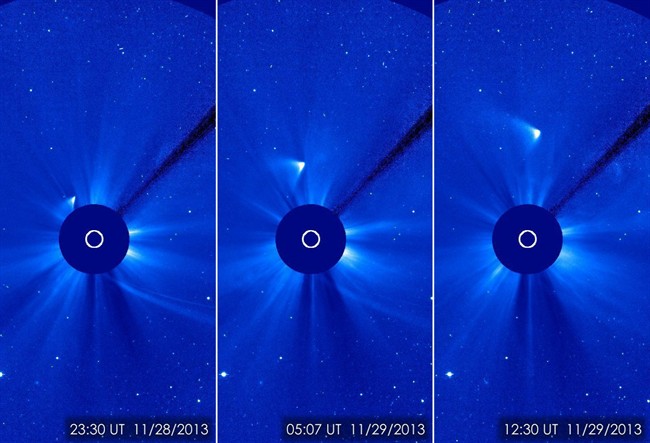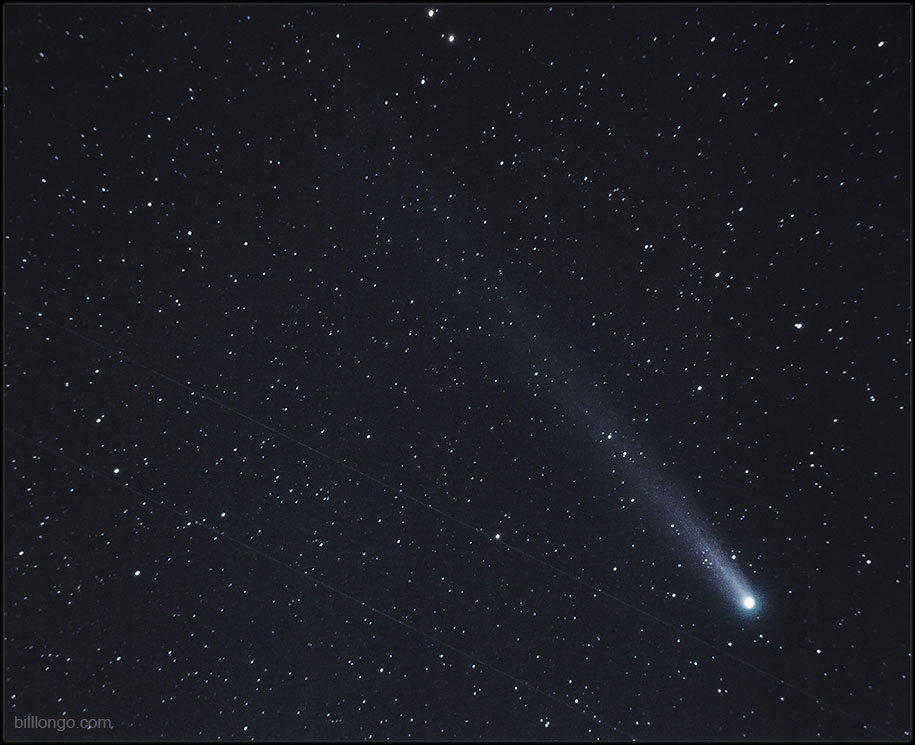TORONTO – “Comet of the century!”

“To be seen in the daytime sky!”
These were only a few claims hyped by media upon the discovery of Comet ISON in September 2012 by Russian astronomers Vitali Nevski and Artyom Novichonok (a comet is usually named after its discoverer, but this one was named after the project that discovered it, the International Scientific Optical Network, ISON).
Of course, none of those claims were true. But for scientists, it didn’t matter: ISON was a chance to peer back at the very beginning of our solar system.
READ MORE: RIP, ISON
Karl Battams, astrophysicist at the United States Naval Research Laboratory (NRL) in Washington, DC, and the voice of ISON throughout the comet’s close pass, was happy with what was accomplished. Battams led the Comet ISON Observing Campaign.
Battams stressed that scientists never claimed ISON would put on the show some believed would happen.
“Before us scientists even got to put our word in, there were stories about the thing being brighter than the full moon and ‘comet of the century,’ so that made life difficult for us because what we…had to convey was that this was a really, really exciting object, just not for the reasons that you’ve been reading about.”
VIDEO: Comet ISON’s pass around the sun (NASA)
And that reason was this: ISON was born out of the Oort cloud — a cloud that extends far beyond the orbit of Pluto — trillions of kilometres away from the sun and which was born 4.5 billion years ago. And the fact that this comet was a sun-grazer — a comet that would pass very close to the sun — made it even more exciting. Scientists would be able to see how this ancient piece of rock interacted with solar radiation, learning about its composition and characteristics.
This was ISON’s first pass, which meant that it had never been bombarded by the sun’s radiation. Scientists wondered if the comet would survive such a close pass — 1.2 million kilometres — above the sun’s surface. The sun is blazing hot at this distance, so hot that it vaporizes almost everything.
“The very hardest rock you can imagine. If the comet was coated in diamonds, the diamonds would instantly boil away and vaporize,” Battams said.
All that heat and radiation was too much for the new comet.
Battam said that it may have been nicer to have had something in the sky for people to see for themselves, but that doesn’t diminish how important a role the comet played for scientists.
“We’ve gotten to watch this thing for such a long period of time now, and we’ve recorded the largest and certainly the broadest data set about a comet in history…One of the key parts of studying a comet is how were they put together. I think as any kid will tell you, the best way to find out how a toy is put together is to rip it apart,” Battams said, laughing.
“And as sad as it may seem, the sun ripped apart our little Christmas present to see how it was put together, and that’s what we’ve got to try to learn from.”
Astronomers will be analyzing the comet for months to come. And they have plenty of data to use.
“Scientifically, it’s just been absolutely incredible,” he said. “I think for me what I loved the most about this whole experience is that we’ve pulled together not only professional observers from big ground-based facilities, but we’ve got 13 different spacecraft involved…Even stuff from Mars. And to top it all off, the amateur community has just been completely crucial to this whole process. We’ve got an army of eyes around the world.”
Though Hubble is scheduled to image where ISON should be, Battam doubts that there will be anything to see. Two other telescopes, Chandra — an X-ray telescope — and Spitzer — an infrared telescope — will also take a look.
It’s good to do this, Battam said, just to confirm that ISON is indeed gone.
Though ISON may be gone, Battams pointed out that there’s still a comet gracing our skies, Comet Lovejoy, that people can enjoy.
The NRL has received many calls from people who bought telescopes in the hope of catching ISON. Now that it’s gone, they wonder if there’s anything else to see.
“The sky is full of wonders. And the next bright comet is just around the corner,” Battams said.
Next year will be chock-full of even more exciting comets. There will be Comet C/2013 A1 (Siding Spring), which will pass incredibly close to Mars at about 110,000 km above the planet’s surface (there had been talk about it colliding with Mars, but calculations have shown that this will not happen). There is also the European Space Agency’s Rosetta mission which will release a lander on the comet 67 P/Churyumov-Gerasimenko.
“And,” Battams said, “Who knows what will turn up in the meantime.”
Battams’s busy schedule is just settling down. He’s spent months observing and analyzing ISON.
So, when asked what the next thing he’s excited about, Battams laughed and said, “A rest.”





Comments